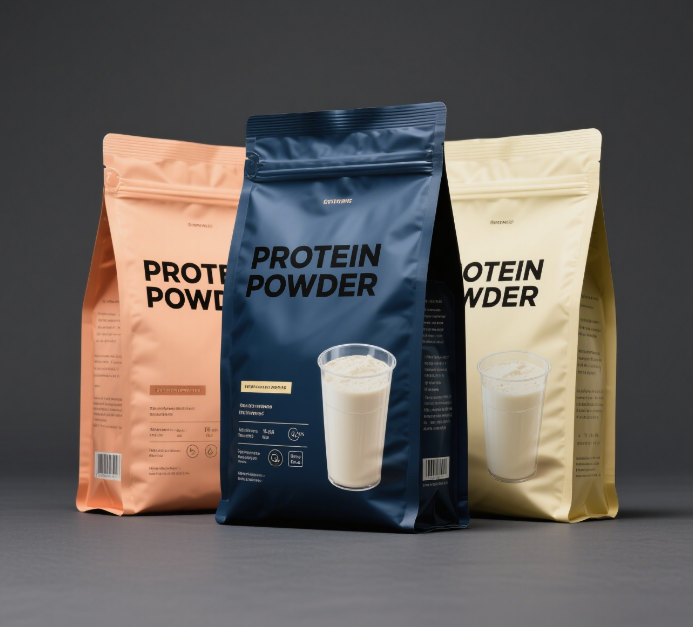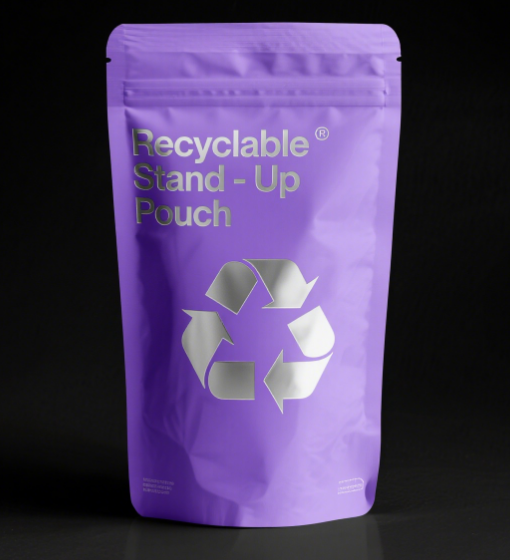Márkaidentitás Átalakítása Stratégiai Csomagolási Megoldásokon Keresztül
A termékek bemutatása sokat árul el márkája értékeiről és elkötelezettségéről a minőség iránt. A mai versenyképes piacon a csomagolózsákok már nem csupán védőedények – ezek hatékony marketingeszközök, amelyek jelentősen befolyásolhatják a fogyasztói megítélést és a vásárlási döntéseket. A luxusipartól a vendéglátásig számos iparág vállalkozásai rájöttek, hogyan tudják a stratégiai csomagolási döntések megnövelni márkajelenlétüket és serkenteni a vásárlói kötődést.
Amikor a vásárlók találkoznak termékével, a csomagolózsák az első tapintással érzékelhető élményt nyújtja márkájából. Ez a kulcsfontosságú érintési pont meghatározza az elvárásokat, és megkülönböztetheti ajánlatát egy zsúfolt piacon. A modern fogyasztók egyre inkább figyelnek az esztétikumra és a fenntarthatóságra egyaránt, ezért a minőségi csomagolózsákok kiválasztása kritikus üzleti döntés, amely hatással van az értékesítésre és a márkaimidzsre egyaránt.
A prémium csomagolási tervezés alapelemei
Anyagválasztás és tartósság
A kiváló csomagolótáska alapja a felhasznált anyagokban rejlik. A prémium anyagok nemcsak a tartalmat védik, hanem minőséget is sugallnak megjelenésükkel és tapintásukkal. Fontolja meg például a nehéz kartonpapír használatát az ökotudatos megközelítéshez, vagy a minőségi műanyag polimereket a nedvességre érzékeny termékekhez. Az anyagnak összhangban kell lennie a márkája értékeivel, miközben biztosítja a termék védelmét az ellátási lánc során.
A tartóssági vizsgálatok döntő fontosságúak a csomagolótáskák kiválasztásánál. A kiválasztott anyagoknak ellenállónak kell lenniük a kezelésnek, a tárolásnak és a szállításnak, miközben megőrzik esztétikus megjelenésüket. Ez magában foglalja a szakadással, vízkárral és környezeti behatásokkal szembeni ellenálló képességet. A minőségi anyagokba való befektetés gyakran csökkenti a sérülési rátát és növeli az ügyfél elégedettséget.
Vizualizációs Dizájn és Márkaösszhang
Egységes vizuális identitás kialakítása csomagolózsákokon keresztül a dizájnelemek gondos megtervezését igényli. A színvilágnak tükröznie kell a márka színvilágát, miközben figyelembe kell venni gyakorlati szempontokat, mint például a színtartósság és a nyomtatási minőség. A betűtípusoknak különböző méretekben is olvashatónak kell lenniük, miközben megőrzik a márka jellemzőit. Ne feledje, hogy a sikeres csomagolástervezés az esztétikai megjelenést és a funkcionális követelményeket képes kiegyensúlyozni.
A márkaegység megőrzése minden csomagolózsákon segít a felismerhetőség és a bizalom építésében. Ez magában foglalja az egységes logóelhelyezést, a stíluselemek következetes használatát és az összefüggő üzeneteket különböző termékvonalakon keresztül. Egy jól megvalósított vizuális stratégia képes az egyszerű csomagolózsákokat erős márkaképviseőkké változtatni.

Felhasználói élményt javító innovatív funkciók
Okos tárolási megoldások
A modern csomagolótáskák innovatív funkciókat tartalmaznak, amelyek javítják a funkcionalitást és a felhasználói kényelmet. Újra zárható záródások, könnyen letéphető csíkok és álló zacskók mindössze néhány példa arra, hogyan tud a gondosan megtervezett megoldás javítani a vásárlói élményt. Ezek a funkciók nemcsak a termékek védelmét szolgálják, hanem a felhasználhatóság javításával értéket is adnak.
Érdemes átgondolni olyan tárolási megoldások beépítését, amelyek meghosszabbítják a termék élettartamát és megőrzik annak frissességét. Olyan funkciók, mint a cipzáros zárak, letépő élek és öntőnyílások jelentősen befolyásolhatják az ügyfél elégedettségét és ismételt vásárlásokat. A kulcs az, hogy olyan funkciókat válasszunk, amelyek valóban előnyt biztosítanak a konkrét termék és célpiac számára.
Környezeti Integráció
A környezetbarát csomagolózsákok már nem választhatóság – elvárás. Az alkalmazott fenntartható anyagok és dizájnelemek jelentősen javíthatják a márkaképet. Érdemes figyelembe venni lebomló anyagokat, újrahasznosított tartalmat, valamint olyan dizájnokat, amelyek csökkentik az anyaghasználatot, miközben megőrzik a struktúra szilárdságát.
A csomagolózsákokon keresztül egyértelműen kommunikálja fenntarthatósági törekvéseit megfelelő címkézéssel és üzenetekkel. Ez a transzparencia segíti a környezettudatos fogyasztókat a megfontolt döntések meghozatalában, és megalapozza a bizalmat a márka fenntarthatóság iránti elkötelezettsége iránt.
Stratégiai megvalósítás maximális hatásért
Pozicionálás a piacon a csomagoláson keresztül
A csomagolózsákok kiválasztása közvetlenül befolyásolja a piaci pozicionálást. A prémium termékek csomagolása tükrözni kell azok minőségét és értékajánlatát. Fontolja meg, hogyan segíthetik a különböző anyagok, felületkezelések és dizájnelemek a termék kívánt piaci szegmensben való elhelyezkedését. A különleges felületkezeléssel rendelkező vagy egyedi struktúrális kialakítású prémium csomagolózsákok indokolják az emelt árakat, és vonzzák a minőségre figyelmes vásárlókat.
Elemezze célpiacának preferenciáit és fájdalompontjait a csomagolási döntések megalapozásához. A kulturális szempontok, használati forgatókönyvek és életmódbeli tényezők mind jelentős szerepet játszanak a márka számára leghatékonyabb csomagolási stratégia meghatározásában.
Költséghatékony minőségi megoldások
Bár a minőségi csomagolózacskók beszerzése költségkímélő befektetést igényel, vannak olyan módok a költségek optimalizálására, amelyek nem veszik el a hatást. A nagy tételű rendelések, szezonális tervezés és a stratégiai anyagválasztás segíthet a kiadások kezelésében, miközben fenntartja a magas színvonalat. Mérje fel az életciklus teljes költségét, beleértve a tárolást, a szállítást és a hulladékcsökkentési előnyöket.
Olyan tapasztalt csomagolási beszállítókkal dolgozzon együtt, akik segítséget tudnak nyújtani költséghatékony megoldások kiválasztásában, amelyek megfelelnek minőségi igényeinek. Néha a némileg drágább csomagolózacskókba való befektetés hosszú távú megtakarításhoz vezethet a sérülések csökkentésével és az ügyfél elégedettség javításával.
Gyakori kérdések
Hogyan válasszam ki a megfelelő méretet a csomagolózacskóimhoz?
Vegye figyelembe a termék méreteit, beleértve a szükséges védőbetéteket is. Adjon hozzá egy kis tűrést az egyszerű behelyezéshez és eltávolításhoz. Gyakran hasznos különböző méretű mintákat rendelni, hogy tesztelje a méret és funkció illeszkedését, mielőtt nagyobb mennyiséget rendelne.
Melyek a legfenntarthatóbb opciók a csomagolózsákok esetében?
Keressen olyan anyagokat, mint például újrahasznosított papír, lebomló műanyagok vagy növényi alapú alternatívák. Győződjön meg arról, hogy az öko-barát állításokat ellenőrizték és tanúsították. Mérje fel a teljes életciklus környezeti hatását, beleértve a gyártási módszereket és a használat utáni elszállítási lehetőségeket.
Hogyan biztosíthatom, hogy csomagolózsákok minősége a szállítás során is megmaradjon?
Válassza az anyagokat a szállítási körülményekhez igazítva, beleértve a hőmérsékletváltozásokat és a kezelés során fellépő terheléseket. Végezzen alapos tesztelést valós körülmények között. Fontolja meg további védőjellemzők beépítését, például megerősített varratok vagy sarkok védelme törékeny áruk esetén.
Melyik nyomtatási módszer a legalkalmasabb különböző csomagolóanyagokhoz?
A választás a Ön anyag- és dizájnigényeitől függ. A digitális nyomtatás rugalmasságot kínál kis példányszám és részletes dizájnodratok esetén, míg a flexográfia költséghatékonyabb lehet nagy mennyiségek esetén. Forduljon nyomdai szakértőkhöz, hogy meghatározza a legmegfelelőbb módszert az Ön konkrét igényeire.




